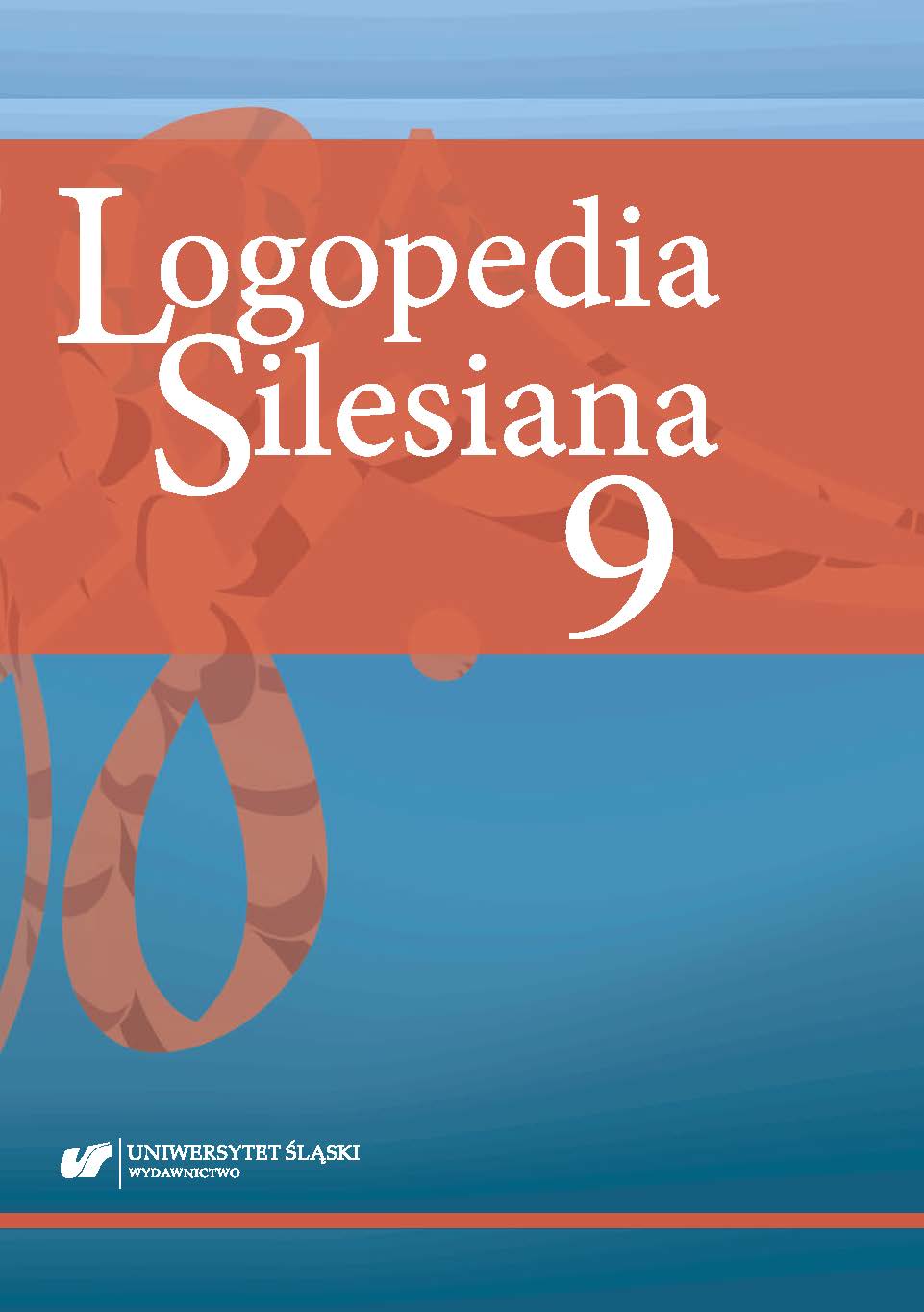Bartmiński, J., Niebrzegowska-Bartmińska, S. (2009). Tekstologia. Warszawa: Wydawnictwo Naukowe PWN.
Google Scholar
Bąk, P. (2010). Gramatyka języka polskiego. Warszawa: Wiedza Powszechna.
Google Scholar
Bochenek, A., Reicher, M. (1981). Anatomia człowieka. T. IV: Układ nerwowy ośrodkowy. Warszawa: Wydawnictwo Lekarskie PZWL.
Google Scholar
Boniecka, B. (2000). Struktura i funkcje pytań. Lublin: Wydawnictwo Uniwersytetu Marii Curie-Skłodowskiej.
Google Scholar
Chodkiewicz, H. (1986). O sprawności czytania w nauczaniu języka obcego. Warszawa: Wydawnictwa Szkolne i Pedagogiczne.
Google Scholar
Drabik, L., Sobol, E. (2007). Słownik języka polskiego. Warszawa: Wydawnictwo Naukowe PWN.
Google Scholar
Gołąb, B. (2004). Anatomia czynnościowa ośrodkowego układu nerwowego. Warszawa: Wydawnictwo Lekarskie PZWL.
Google Scholar
Grabias, S. (2019). Język w zachowaniach społecznych. Podstawy socjolingwistyki i logopedii. Lublin: Wydawnictwo Uniwersytetu Marii Curie-Skłodowskiej.
Google Scholar
Grabias, S. (2007). Język, poznanie, interakcja. W: T. Woźniak, A. Domagała (red.), Mowa. Teoria – praktyka. Język, interakcja, zaburzenia mowy. Metodologia badań (t. 2, s. 355–377). Lublin: Wydawnictwo Uniwersytetu Marii Curie-Skłodowskiej.
Google Scholar
Grabias, S. (1997). Mowa i jej zaburzenia. Lublin: Wydawnictwo Uniwersytetu Marii Curie-Skłodowskiej.
Google Scholar
Grabias, S., (2012). Teoria zaburzeń mowy. Perspektywy badań, typologie zaburzeń, procedury postępowania logopedycznego. W: S. Grabias, Z.M. Kurkowski (red.), Logopedia. Teoria zaburzeń mowy (s. 15−72). Lublin: Wydawnictwo Uniwersytetu Marii Curie-Skłodowskiej.
Google Scholar
Kądzielawa, D. (1983). Czynność rozumienia mowy. Analiza neuropsychologiczna. Wrocław: Ossolineum.
Google Scholar
Konorski, J. (1969). Integracyjna działalność mózgu. Warszawa: PWN.
Google Scholar
Łuria, A.R, (1976). Podstawy neuropsychologii. [Tłum. D. Kędzielawa]. Warszawa: PZWL.
Google Scholar
Maruszewski, M. (1966). Afazja. Zagadnienia teorii i terapii. Warszawa: PWN.
Google Scholar
Maruszewski, M. (1970). Mowa a mózg. Zagadnienia neuropsychologiczne. Warszawa: PWN.
Google Scholar
Panasiuk, J. (2012). Diagnoza logopedyczna w przebiegu chorób neurologicznych u osób dorosłych. W: E. Czaplewska, S. Milewski (red.), Diagnoza logopedyczna. Podręcznik akademicki (s. 263–324). Gdańsk: Harmonia Universalis.
Google Scholar
Panasiuk, J. (2013). Afazja a interakcja. TEKST – metaTEKST – konTESKT. Lublin: Wydawnictwo Uniwersytetu Marii Curie-Skłodowskiej.
Google Scholar
Panasiuk, J. (2015). Standard postępowania logopedycznego w afazji. W: S. Grabias, J. Panasiuk, T. Woźniak (red.), Logopedia. Standardy postępowania logopedycznego (s. 869–916). Lublin: Wydawnictwo Uniwersytetu Marii Curie-Skłodowskiej.
Google Scholar
Panasiuk, J., Woźniak, T. (2002). Pojęcie tekstu a zaburzenia mowy. W: S. Grabias (red.), Zaburzenia mowy. Mowa. Teoria. Praktyka (t. 1, s. 108–132). Lublin: Wydawnictwo Uniwersytetu Marii Curie-Skłodowskiej.
Google Scholar
Polkowska, A. (1993). Rozumienie tekstu. W: I. Kurcz (red.), Psychologia a semiotyka. Pojęcia i zagadnienia (s. 266–267). Warszawa: Zakład Semiotyki Logicznej Uniwersytetu Warszawskiego „Znak. Język. Rzeczywistość”.
Google Scholar
Prusiński, A. (1980). Podstawy neurologii klinicznej. Warszawa: PZWL.
Google Scholar
Seretny, A., Lipińska, E. (2005). ABC metodyki nauczania języka polskiego jako obcego. Kraków: Universitas.
Google Scholar
Stanosz, B. (2005). Wprowadzenie do logiki formalnej. Podręcznik dla humanistów. Warszawa: Wydawnictwo Naukowe PWN.
Google Scholar
Walsh, K. (1998). Neuropsychologia kliniczna. Tłum. B. Mroziak. Warszawa: Wydawnictwo Naukowe PWN.
Google Scholar
Wojciechowska, J. (2014). Metodologiczne podstawy badań nad rozumieniem w pragnozji. Forum Logopedyczne, 22, 35–44.
Google Scholar
Wojciechowska, J. (2015). Ocena rozumienia tekstu w praktyce logopedycznej. Logopedia Silesiana, 4, 304–318.
Google Scholar


 https://doi.org/10.31261/LOGOPEDIASILESIANA.2020.09.03
https://doi.org/10.31261/LOGOPEDIASILESIANA.2020.09.03

 10.31261/LOGOPEDIASILESIANA
10.31261/LOGOPEDIASILESIANA